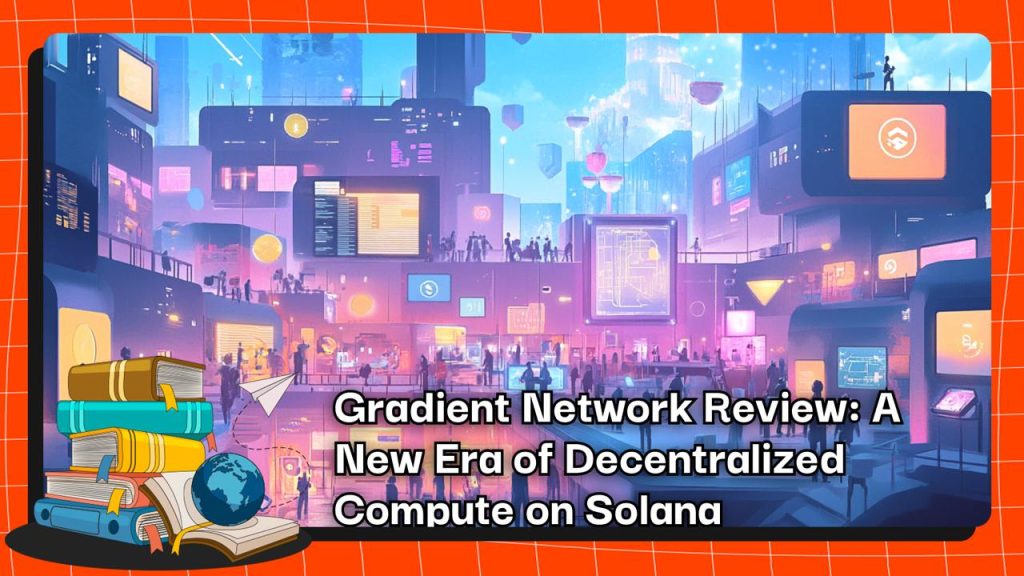Gradient Network is on a mission to decentralize cloud computing while bringing affordable, speedy, and scalable edge computing resources to Web3 and AI through blockchain technology.

What is Gradient Network?
Gradient Network is a decentralized protocol built on top of Solana that democratizes computing power. It opens an edge computing layer, making computing resources highly available to perform tasks like AI inference, content delivery, and serverless functions. This new approach spreads out computing power, decreases overdependence on centralized players in big tech, and makes infrastructure more accessible to all.
The vision is underpinned by three key tenets, and three pillars: Pervasive Connectivity, Homogenized Computation, and Adaptive Orchestration. Gradient has been trying to recast the future of cloud computing anchored by these core elements.
This is none more compelling now than in a time when AI is still developing, and with it, the associated risk in centralized control of computation is increasing, making Gradient very timely as a solution to meet these emerging challenges and thus drive this new generation of decentralized computing.
Read More: DAWN Review: DePIN Project Raises Huge Funds on Solana Ecosystem
How does it work?

Gradient Network works on a layered architecture, which allows it to provide decentralized, scalable, and efficient computing resources.
The basic layers composing Gradient Network are as follows:
- Pervasive Connectivity Layer: This forms the backbone of Gradient’s decentralized model that enables a mesh network much better than traditional client-server architectures. It enhances decentralization, efficiency, and data privacy by getting rid of intermediaries.
- Homogenized Computation Layer: This commoditizes a variety of compute resources, integrated within one network. It increases availability by knitting together a variety of resources in a cohesive fashion.
- Adaptive Orchestration Layer: Whether the demand in computation is for primary services, advanced services, or any other service, the orchestration layer of Gradient will make access to compute frictionless and it will dynamically manage those resources on the network.
Gradient utilizes Solana’s speed blockchain infrastructure to drive the Oracle and the Settlement Layer, which handles the responsibility of network-wide consensus and makes sure the nodes interact efficiently. Given this kind of structure, there’s a chance it could push the boundaries of innovation in Web3 by ensuring users get a reliable, decentralized alternative to computation.
Sentry Nodes and Rewards
Gradient’s Sentry Nodes are lightweight nodes that underpin its Pervasive Connectivity phase; these nodes are designed to preserve user privacy while mapping global connectivity. The Sentry Nodes will be incentivized by both uptime-ensuring Proof of Availability and proof of verified connectivity rewards, Proof of Connectivity. In Season 0, node operators will also have an opportunity to earn extra rewards through referrals and achievements.
Read More: io.net Review: Notable DePIN Project In The Solana Ecosystem
Gradient Network Airdrop Guide
Step 1: Go to the Gradient website and connect your email.
Enter Code: V9KR0Q to receive 3000XP and 2% reward boost
Step 2: Connect X and Follow Gradient. Then download Gradient Extension and hang it like Grass.
Step 3: You can check the status of the Node by opening the Gradient Extension.
If the status shows Good, it means your node is working properly.
If the status shows Unsupported, you may be in an unsupported area or using an IP address.
Tokenomics
Tokenomics for the Gradient Network are not available yet. Therefore, the project should enforce a token-based reward mechanism for participation in Sentry Node or other network activities.
Team, Investors, and Partners
Team
Gradient Network was founded by Yuan Gao, a seasoned expert in the blockchain space who previously served as Head of Growth at Helium Foundation and Head of Marketing at NEO. His extensive experience in decentralized networks provides a strong foundation for Gradient’s mission of democratizing compute resources.
Investors
The project has successfully attracted investments from Pantera Capital, Multicoin Capital, and Sequoia Capital in its first funding round. Although the exact funding amount has not been publicly disclosed, the involvement of these major players underscores the potential of Gradient Network to transform the computing landscape.
Roadmap
The development of a Gradient Network will be phase-by-phase, with inspiration taken from “Gradient Descent”, one of the most important conceptions in the field of machine learning. Thus, it currently dwells in Phase I: Pervasive Connectivity it creates a decentralized computing infrastructure by deploying Sentry Nodes. After that, this will further go into stages like Homogenized Computation and Adaptive Orchestration to completely decentralize these computing resources.
Conclusion
Gradient Network is all about setting the stage for a decentralized future of computing via infrastructure that is blockchain-based with greater accessibility and affordability, totally decentralized in its entire build. The project uses edge computing in combination with blockchain technology and aims to break into conventional cloud services by offering a more secure, distributed alternative.
CoinCu highlights that Gradient Network holds significant potential in the DePIN sector, making it an attractive option for both airdrop hunters and long-term investors looking to benefit from the decentralized computing trend.
FAQs
1. What is the role of Sentry Nodes in Gradient Network?
Sentry Nodes will play a key role in forming the decentralized connectivity infrastructure of Gradient. They are mapping out global connectivity and incentivized for uptimes and verification of connectivity.
2. How can I participate in Gradient’s reward system?
You can participate by operating a Sentry Node, which gives you Proof-of-Availability PoA and Proof-of-Connectivity PoC rewards. You have further bonuses through referrals and achievements.
3. When will Gradient release its tokenomics?
Gradient Network has not yet released its tokenomics, but more information is expected as the project moves beyond Season 0.
| DISCLAIMER: The information on this website is provided as general market commentary and does not constitute investment advice. We encourage you to do your own research before investing. |




